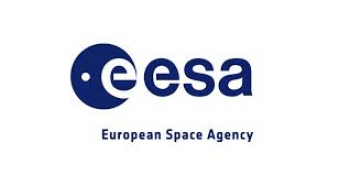
Research impact: Exercise and rehabilitation equipment
A body of research built over 20 years is changing the way manufacturers think about strength-based activity and the equipment they design.
Summary
Research summary
Over the past 20 years, researchers at the Centre for Musculoskeletal Science and Sports Medicine have provided evidence for the importance of strength-based physical activity.
They have published more than 70 peer-reviewed papers that have helped determine the most effective exercises to increase strength, performance and quality of later life.
Their studies range from cells to the whole body and they have used a variety of research methods, many of which they have pioneered.
The group’s influential studies include research on:
Concentric versus eccentric exercise
Researchers investigated the differences between strength and resistance exercises that either shorten muscles (concentric) or lengthen them (eccentric). In studies with older adults and younger people, they found that enhanced eccentric activities substantially improve the structure and function of muscles compared to conventional, concentric-only resistance training. The research has helped find ways for older people and others with lower muscle mass to do exercises which improve their strength, mobility and quality of life. It’s also been used by leading manufacturers to develop improved exercise equipment.
Isoinertial exercise
Researchers worked with the European Space Agency (ESA) to study the impact of isoinertial exercise - activities that keep muscles working at a constant level, such as flywheel weights and resistance settings on exercise equipment. As well as being useful for those living and working in zero gravity, the findings have helped discover new techniques for building muscle strength in older people.
Validation of tensiomyography
Tensiomyography involves measuring the speed and stiffness of muscles as they contract, and can be used to track changes in the muscle as a result of exercise, inactivity or illness. Researchers have helped to establish that the technique gives a good non-invasive indication of the fibre type composition of muscle and can be used to detect early signs of muscle atrophy.
Blockquote
We still refer to the 2011 Manchester Met study during our sales and after market support. It provides some of the most important evidence on the validity of our system’s measurement. We estimate that a third of our sales are based on this evidence.
Impact
Research impact
The Centre’s research is not only changing the way people exercise, but has also been applied by businesses to develop new products and services
Equipment design and innovation
Equipment innovation in the health and fitness industry helps manufacturers to gain a competitive advantage and drive their commercial growth. The Centre’s research has been used as the basis for new products and whole product ranges.
Global fitness brand TechnoGym used the Manchester Met research to develop equipment which enables optimised concentric and eccentric exercises. Other companies (such as Sweden’s nHANCE and Exxentric) have used the centre’s research to develop isoinertial exercise equipment, which has proved popular for home-use during the pandemic. The research has helped Slovenian company TMG bring to market the world’s only validated tensiomyography device, which is being used by professional football clubs, hospitals, clinics, research laboratories, and the US military.
Product development strategy, product launches and international sales growth
As well as being used in equipment design, the research has been used to inform product development strategy.
For TechnoGym this meant designing and marketing equipment for older users and developing systems for medical rehabilitation. The company’s equipment is used in more than 80,000 fitness and wellness centres and 100,000 homes worldwide - with as many as 70,000,000 people using its equipment to exercise.
Tensiomyography introduces unique ways of training optimisation, follows changes of contractile muscle properties in time and alerts me when the parameters show local muscle fatigue even before I can feel it.
Research outputs
Academic papers
-
Franchi, MV, Atherton, PJ, Reeves, ND, Flück, M, Williams, J, Mitchell, WK, Selby, A, Beltran Valls, RM and Narici, MV (2014) Architectural, functional and molecular responses to concentric and eccentric loading in human skeletal muscle Acta Physiologica, 210(3):642-654
-
Franchi, MV, Wilkinson, DJ, Quinlan, JI, Mitchell, WK, Lund, JN, Williams, JP, Reeves, ND, Smith, K, Atherton, PJ and Narici, MV (2015) Early structural remodeling and deuterium oxide‐derived protein metabolic responses to eccentric and concentric loading in human skeletal muscle. Physiological reports, 3(11):e12593.
-
Reeves, ND, Maganaris, CN, Longo, S and Narici, MV (2009) Differential adaptations to eccentric versus conventional resistance training in older humans Experimental physiology 94(7):825-833.
-
Onambélé, GL, Maganaris, CN, Mian, OS, Tam, E, Rejc, E, McEwan, IM and Narici, MV (2008) Neuromuscular and balance responses to flywheel inertial versus weight training in older persons Journal of biomechanics, 41(15):3133-3138.
-
Seynnes, OR, de Boer, M and Narici, MV, (2007) Early skeletal muscle hypertrophy and architectural changes in response to high-intensity resistance training Journal of applied physiology, 102(1):368-373.
-
Rittweger, J, Frost, HM, Schiessl, H, Ohshima, H, Alkner, B, Tesch, P and Felsenberg, D (2005) Muscle atrophy and bone loss after 90 days’ bed rest and the effects of flywheel resistive exercise and pamidronate: results from the LTBR study Bone, 36(6):1019-1029.
-
Šimunic, B, Degens, H, Rittweger, J, Narici, M, Mekjavic, IB and Pišot, R (2011) Noninvasive estimation of myosin heavy chain composition in human skeletal muscle. Medicine & Science in Sports & Exercise, 43(9), 1619-1625.
Research team
Research team
Featured researchers
Logos
In partnership with:

TechnoGym

European Space Agency
Contact us
Contact us
For general enquiries about the Musculoskeletal Function in Health and Ageing group, you can contact its lead Prof Rachel Cooper.


